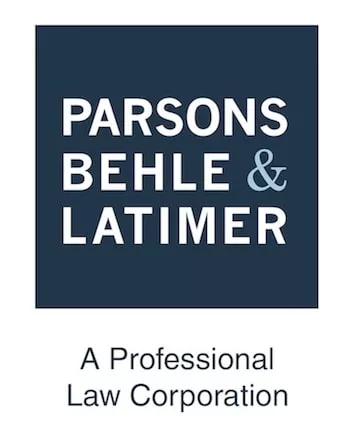On May 18, 2022, the Idaho Supreme Court decided Daniel Sharp v. Thomas Brothers Plumbing. It clarified the scope of an employer's liability for workplace injuries under the Idaho Workers' Compensation Act (the Act). Specifically, the Court adopted a new standard for determining whether an employer faces liability for workplace injuries which the employee's off-work conduct may have aggravated.
The Act requires nearly all employers to insure employees against work-related injuries. The Act expressly intends to provide "sure and certain relief for injured workmen and their families" in the form of disability benefits-namely, wage replacement and medical benefits. A work-related injury that falls within the scope of the Act is considered a "compensable injury." An employee with a compensable injury may receive temporary or permanent disability benefits from his or her employer depending on the length and severity of the disability.
But what if the employee's subsequent conduct aggravates the injury? Does an employer face additional liability for the aggravation of the injury? The Idaho Supreme Court addressed these issues in its ruling.
In August 2015, Daniel Sharp (Sharp) injured his back while working as a plumber for Thomas Brothers Plumbing (TBP). After undergoing back surgery for the injury, Sharp complained of persistent pain in both legs and his lower back. Sharp is 5'6" tall and, at the time of his injury, weighed 250 pounds. After his injury, doctors repeatedly advised Sharp to lose weight. Despite his efforts, Sharp failed to do so. In fact, by April 2018, Sharp weighed 362 pounds and continued to suffer from severe pain. At that point, he filed a workers' compensation claim with the Idaho Industrial Commission (the Commission) for additional medical benefits and total, permanent disability benefits.
At a hearing before the Commission, Sharp and TBP each submitted expert reports assessing Sharp's employment prospects. Sharp's expert relied upon a 2018 medical examination performed when Sharp weighed 362 pounds. Based on the examination, Sharp's expert report assessed significant work restrictions. In contrast, TBP's expert report relied upon a medical examination performed on Sharp in 2016, when he had reached maximum medical improvement (MMI) and weighed 323 pounds. TBP's report assessed relatively less significant work restrictions. Reviewing both expert reports, the Commission recognized that the difference between the work restrictions in TBP's report and Sharp's report was due to the passage of time and Sharp's post-accident weight gain. The Commission adopted TBP's expert report, reasoning that TBP should not be liable for Sharp's injury to the extent Sharp exacerbated it.
On appeal to the Idaho Supreme Court, Sharp argued that the Commission committed numerous errors. Among other things, Sharp argued that the Commission erred by evaluating his disability as it existed at the time he reached MMI (2016), rather than at the time of the hearing (2018). On this point, the Court agreed with Sharp and set forth a two-step analysis for the Commission to apply: (1) Unless the Commission perceives that a party has taken an action that has the effect of manipulating the outcome of the disability determination, "the Commission must evaluate a claimant's disability considering the claimant's personal and economic circumstances at the time of the hearing"; and (2) "if the Commission determines that an employer is not liable for some portion of the claimant's overall disability, the Commission must apportion to the employer only that disability for which the employer is liable."
Regarding the second prong of this analysis, the Court noted that the Act creates a presumption that an employer is liable for primary and secondary consequences arising from a compensable injury. As such, an employer is liable for harms stemming from the aggravation of a compensable injury-even if the aggravation is not connected to the employee's work accident or employment generally. To emphasize this point, the Court provided the following illustration: "For example, if the aggravation of Sharp's injury had been caused by a sneeze while he sat at home, it would not matter whether there was a connection between the sneeze and Sharp's employment; [TBP] would remain liable." Based on these considerations, the Court concluded that an employer is liable for the aggravation of an employee's injury unless the employee acts with a "rash or deliberate disregard of the risk that additional harm would flow from the compensable injury." The Court emphasized that a deliberate disregard of risk consists of more than "occasional lapses in judgment." A deliberate disregard of the risk of harm arises "[w]hen an injured employee undertakes a line of action with knowledge of a particular risk ... In other words, a heightened degree of negligence."
The Court's decision in Daniel Sharp v. Thomas Brothers Plumbing confirms that an employer may face liability for costs stemming from the aggravation of an employee's compensable injury, even when the aggravation results from the employee's negligent, off-the-clock conduct. However, determining liability for an aggravated injury requires a fact-specific inquiry. Therefore, an employer seeking to limit its liability under workers' compensation laws should obtain the advice of legal counsel.
The content of this article is intended to provide a general guide to the subject matter. Specialist advice should be sought about your specific circumstances.
We operate a free-to-view policy, asking only that you register in order to read all of our content. Please login or register to view the rest of this article.


